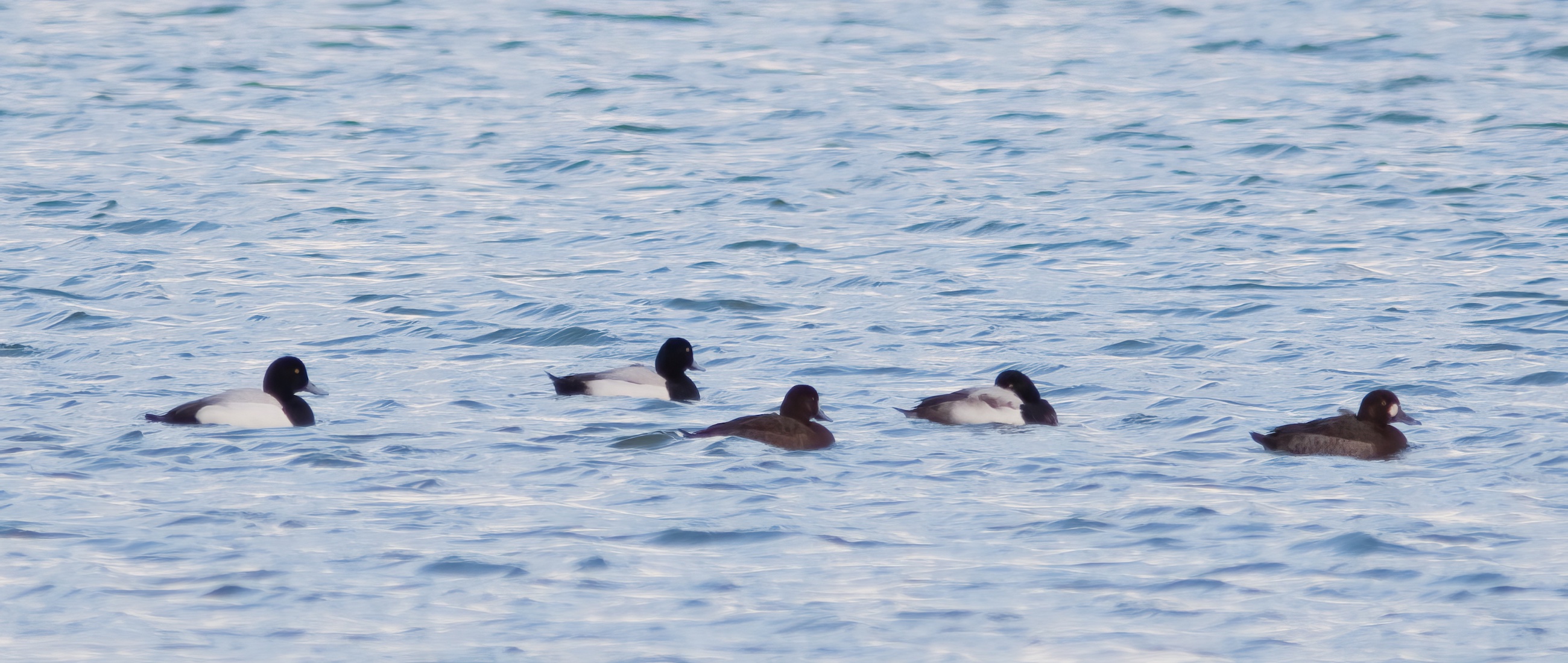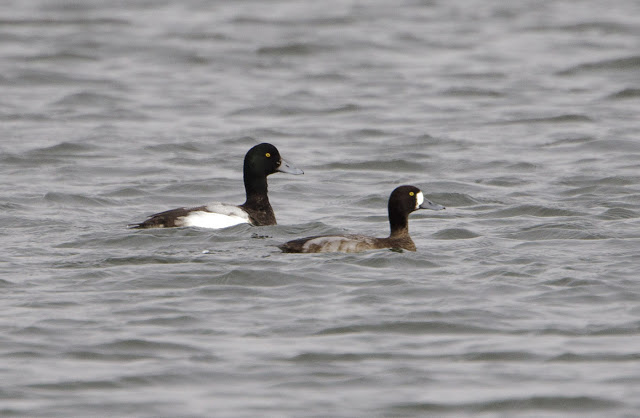Greater Scaup Aythya marila
Scarce passage migrant and winter visitor to estuaries and coast; numbers have declined. Rare in summer; bred in 1944.


Greater Scaup, Barton Pits: left, February 13th 2011 and right, February 13th 2011 (Graham Catley).
Cordeaux (1872) stated that Greater Scaup was then the commonest duck wintering on the Humber. Flocks of more than 1,000 were recorded there in the late 19th century. The Atlas refers to flocks of several hundred wintering in the 1980s. In recent years WeBS Online reports show that the wintering population has averaged around 35 birds per year to 2018/19 with a mean of 13 on The Wash, 12 on the Humber and 11 at inland sites. In recent years the largest flock recorded was 30 at the Witham Mouth March 8th-9th 2018, when 21 were also counted along the river Witham between Bardney and Kirkstead Bridge, an exceptional year. The maximum British wintering population in recent years has been 1,954. About as an irregular breeder as it possible to imagine, a female was found with seven ducklings on Tetney Marsh in 1944. No breeding has been suspected since, though birds do sometimes summer on the Humber Bank clay pits.
(Account as per new Birds of Lincolnshire (2021), included September 2022)
